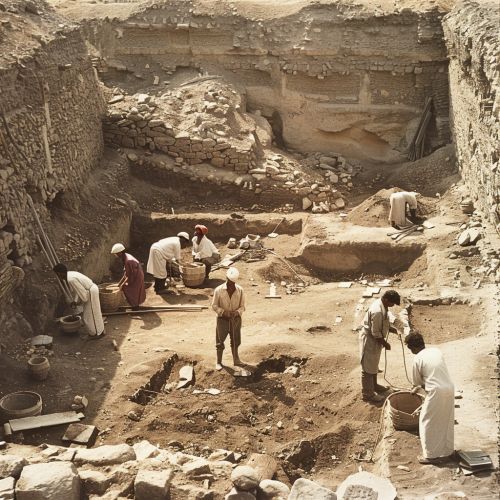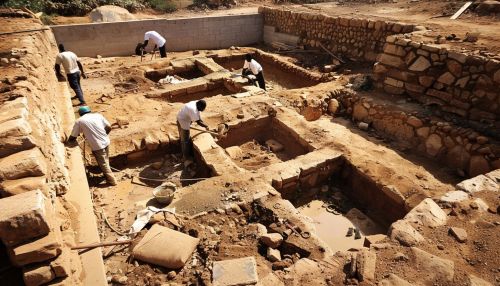Archaeological Method
Introduction
Archaeological method refers to the techniques and approaches that archaeologists use to study past human cultures and societies. These methods are employed to recover and analyze artifacts, features, ecofacts, and other remains that have been left behind by past human activities. The archaeological method is a complex process that involves several stages, from the initial survey and excavation to the analysis and interpretation of the findings. It is a multidisciplinary field, drawing on techniques from other fields such as anthropology, history, geology, and statistics.
History of Archaeological Method
The history of archaeological method can be traced back to antiquity, but it was not until the 19th century that archaeology began to develop as a systematic discipline. Early archaeologists often focused on the collection of artifacts, with little regard for their context or provenance. However, the advent of stratigraphy in the late 19th century marked a significant shift in archaeological practice. This method, which involves the study of layers of soil, allowed archaeologists to establish a relative chronology of archaeological sites and to understand the sequence of human activities over time.


Survey
The first step in the archaeological method is the survey. This involves the systematic examination of the landscape to identify potential archaeological sites. There are several types of archaeological surveys, including pedestrian surveys, aerial surveys, and geophysical surveys. Pedestrian surveys involve archaeologists walking across the landscape, looking for visible signs of past human activity, such as changes in vegetation or soil color. Aerial surveys use aerial photography or satellite imagery to identify archaeological features that may not be visible from the ground. Geophysical surveys use techniques such as ground-penetrating radar or magnetometry to detect subsurface archaeological features.
Excavation
Once a potential archaeological site has been identified, the next step is excavation. This involves the systematic removal of soil and other materials to uncover the archaeological remains. Excavation is a meticulous process, with each layer of soil removed and analyzed separately. This allows archaeologists to establish a stratigraphic sequence for the site, which can provide information about the sequence of human activities over time. During excavation, archaeologists carefully record the location and context of each artifact or feature they uncover. This information is crucial for the subsequent analysis and interpretation of the findings.
Post-Excavation Analysis
After the excavation, the findings are analyzed and interpreted. This involves the study of the artifacts, features, and other remains that have been uncovered. Archaeologists use a variety of techniques to analyze these materials, including typology, seriation, and statistical analysis. Typology involves the classification of artifacts into types based on their physical characteristics. Seriation is a method of relative dating that involves arranging artifacts in a sequence based on changes in their style or frequency over time. Statistical analysis can provide insights into patterns and trends in the archaeological data.
Interpretation and Publication
The final stage of the archaeological method is the interpretation and publication of the findings. This involves the synthesis of the data and the formulation of hypotheses or theories about the past human activities that produced the archaeological remains. The results of the archaeological investigation are usually published in scholarly journals or books, and may also be presented at academic conferences or public lectures. The publication of the findings is an important part of the archaeological process, as it allows other researchers to scrutinize the data and the interpretations, and contributes to the collective knowledge of human history.
Challenges and Critiques
Like any scientific method, the archaeological method is subject to challenges and critiques. One of the main challenges in archaeology is the issue of preservation. Not all materials survive in the archaeological record, and those that do are often fragmented or degraded. This can limit the amount of information that can be obtained from the archaeological remains. Another challenge is the issue of interpretation. Archaeology is inherently interpretive, and different researchers may draw different conclusions from the same data. In recent years, there has also been a growing critique of the Eurocentric bias in archaeological method and theory, with calls for more inclusive and decolonized approaches to archaeology.
